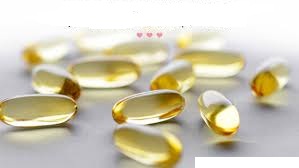





Published on Feb 13, 2025
The objective: Discover whether adding gelatin (a collagen) causes a solid (in this case, popsicles) to have a higher melting point and/or melt slower.
What is gelatin, how is it made, and what is it used for?
What are the properties of a gel? What does it do?
Is a gel considered to be a solid, a liquid, both, or neither?
Gelatin is a protein substance that is created by boiling connective tissues, bones, skins of animals or stem roots from plants with a similar structure. It is used in many applications such as to create the much-loved Jello, taffy, marshmallows, wines, capsules for medicine, and much more. Gelatin has beneficial properties such as transparency, strength, flexibility, easy to digest, soluble in hot water, and great binding properties. In this experiment, we'll explore its resistance to warmth.

Orange juice (or just distilled water if you don't have any kind of juice available)
1 package of plain gelatin
Freezer
Water Kettle to Boil Water
Two sets of Popsicle Molds
Two measuring glasses/beakers
Popsicle Sticks
Timer/Clock
One Adult to supervise child
1. First lets create the experimental control. Pour the juice into each of the popsicles molds, stick some popsicle sticks inside, and just pop into the freez er. Label this as the Control.
2. Next, is the experimental variable. This time, gelatin will be added to the mixture. Ask an adult to help you boil some water (about one cup) and stir it into the gelatin powder. Be sure to let it complete dissolve. Stirring for two minutes should be enough. Combine this mixture thoroughly with some of the leftover juice from step1. Pour into a second set of molds and put into the freez er. Be sure to label this as the set WITH the gelatin added.
3. Freez e both sets for at least 6-8 hours or overnight until it solidifies.
4 . Carefully remove one popsicle from each set of molds and put it inside two separate measuring glasses/beakers at room temperature. Label the respective contents.
5. Carefully observe how much liquid has been collected inside the beakers at intervals of five minutes until all has melted. Just pick up the popsicle portion before taking down the measurement as a solid inside a liquid will cause it to rise and thus affects the accuracy of the measurement.
6. Which one melted completely first? Does gelatin help delay the melting process? Record your results.

http://www.ivu.org/faq/gelatine.html
http://www.madehow.com/Volume-5/Gelatin.html
Ward, A.G.; Courts, A. (1977). The Science and Technology of Gelatin. New York: Academic Press. ISBN 0127350500.
Schlesinger, Henry. The Battery: How Portable Power Sparked a Technological Revolution. Smithsonian (2010)